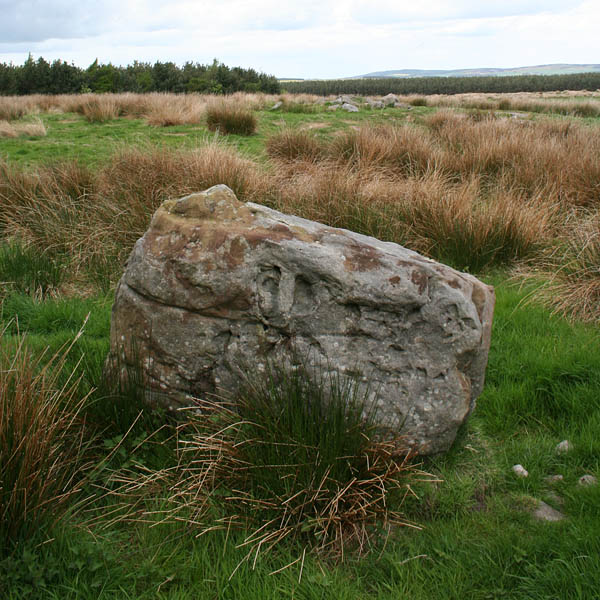If you want to see one of the most peculiar cairns the north of England has to offer, come here.
As stated below, the variety of rock art is top notch, with many motifs, of all different designs and execution. But don’t be distracted by the bvious carvings, there are a few heavily eroded complex ones to be found on the northern side of the cairn. These are at one end of the extant spectrum of visibility at thi site, with the other end being occupied by the most in-yer-face motif, which looks susiciously as if it’s been re-touched at some point in the distant past. Much the same as one nearby at West Horton
But the thing that makes this cairn odd is the large number of portable marked stones found during excavation. It’s generally a workable rule of thimb that portable cup marked stones in cairns are associated with some kind of funereal function, like those on the underside of cist covers. But the carn here yielded absolutely no sign of any burials at all, not even a bit of burnt bone, nor potsherd.
This doesn’t mean it wasn’t of course, but it certainly adds to the ambience of the place to think that it’s maning, and the meanings of the carvings, is so obscurely lost in the mists of time, that it defies even the most general of generalisations.
Access does require getting in touch with the farm though, they’re quite keen on that, as they usually have livestock in the field.






































